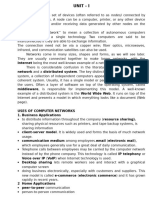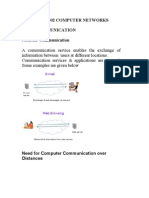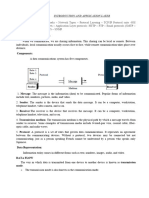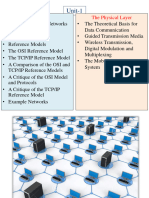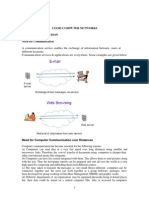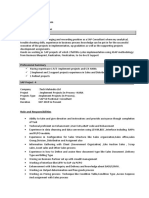0% found this document useful (0 votes)
21 views25 pagesData Communication and Networking 1
Data communications involve the exchange of data between devices through a transmission medium, requiring a combination of hardware and software for effective communication. Key characteristics of a data communications system include delivery, accuracy, timeliness, and jitter, while its components consist of a message, sender, receiver, transmission medium, and protocol. Networks can be classified by their physical topology, such as bus, star, ring, tree, mesh, and hybrid, each with its own advantages and disadvantages.
Uploaded by
Lalit DumkaCopyright
© © All Rights Reserved
We take content rights seriously. If you suspect this is your content, claim it here.
Available Formats
Download as PDF, TXT or read online on Scribd
0% found this document useful (0 votes)
21 views25 pagesData Communication and Networking 1
Data communications involve the exchange of data between devices through a transmission medium, requiring a combination of hardware and software for effective communication. Key characteristics of a data communications system include delivery, accuracy, timeliness, and jitter, while its components consist of a message, sender, receiver, transmission medium, and protocol. Networks can be classified by their physical topology, such as bus, star, ring, tree, mesh, and hybrid, each with its own advantages and disadvantages.
Uploaded by
Lalit DumkaCopyright
© © All Rights Reserved
We take content rights seriously. If you suspect this is your content, claim it here.
Available Formats
Download as PDF, TXT or read online on Scribd
/ 25























